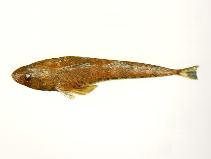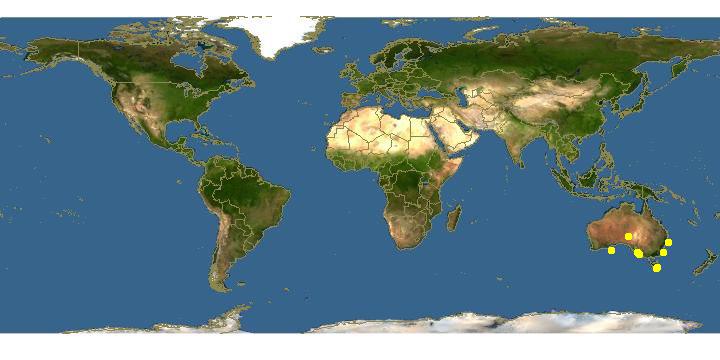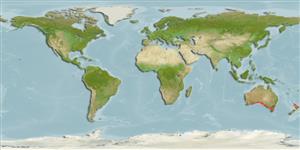http://www.fishbase.org/Summary/speciesSummary.php?genusname=Platycephalus&speciesname=bassensis ---> http://192.134.151.83/Summary/speciesSummary.php?genusname=Platycephalus&speciesname=bassensis
http://192.134.151.83/Summary/speciesSummary.php?genusname=Platycephalus&speciesname=bassensis ---> https://fishbase.mnhn.fr/Summary/speciesSummary.php?genusname=Platycephalus&speciesname=bassensis
https://fishbase.mnhn.fr/Summary/speciesSummary.php?genusname=Platycephalus&speciesname=bassensis ---> https://fishbase.mnhn.fr/summary/Platycephalus-bassensis.html
Platycephalus bassensis, Southern sand flathead : fisheries

You can
sponsor
this page
Common name (e.g. trout)
Genus + Species (e.g. Gadus morhua)
-

-
About this page
-
Languages
-
User feedbacks
-
Citation
-
Uploads
-
Related species
-


 Southern sand flathead
Add your observation in
Fish Watcher
Upload your
photos
and
videos
Southern sand flathead
Add your observation in
Fish Watcher
Upload your
photos
and
videos
Pictures
|
Videos |
Google image
 Platycephalus bassensis
Platycephalus bassensis
Picture by
CSIRO
Teleostei (teleosts) >
Perciformes/Scorpaenoidei
(Scorpionfishes) >
Platycephalidae
(Flatheads)
Etymology:
Platycephalus:
Greek, platys = flat + Greek, kephale = head (Ref.
45335
)
.
More on author:
Cuvier
.
Environment: milieu / climate zone / depth range / distribution range
Ecology
Marine; brackish; demersal; depth range 1 - 100 m (Ref.
9563
). Temperate; 30°S - 43°S
Indo-Pacific: known only from southern Australia.
Length at first maturity / Size / Weight / Age
Maturity: L
m
23.5
range ? - ? cm
Max length : 46.0 cm TL male/unsexed; (Ref.
9563
); max. published weight: 3.1 kg (Ref.
6390
)
Short description
Morphology
|
Morphometrics
Vertebrae
: 18 - 20. This species differs from
Platycephalus westraliae
in having the following characters: both second dorsal and anal fin rays usually 14 (vs. 13), total gill rakers 18-20 (vs. 10); palatine with a tooth band comprised of several irregular rows of conical teeth (vs. with an inner larger conical and an outer smaller villiform tooth rows); caudal fin with several small pale brown spots on the upper lobe and one or two large dark brown or black spots on the lower lobe, and with concave posterior margin (vs. with 3 dark bands and with mostly straight posterior margin) (Ref.
86914
).
Inhabit coastal waters from shallow bays and inlets to depths of about 100 m over sand, shell grit and mud substrates (Ref.
6390
). Sand flathead are usually solitary but may form loose aggregations (Ref.
2165
,
27247
). They sometimes move long distances (Ref.
6390
). They are active foragers and ambush predators (Ref.
6390
), occasionally are scavengers (Ref.
6390
). Feed on crustaceans and fish (Ref.
2165
). Its fin spines are venomous, can inflict mild to severe pain (Ref.
125684
).
Life cycle and mating behavior
Maturity
|
Reproduction
|
Spawning
|
Eggs
|
Fecundity
|
Larvae
Paxton, J.R., D.F. Hoese, G.R. Allen and J.E. Hanley
, 1989. Pisces. Petromyzontidae to Carangidae. Zoological Catalogue of Australia, Vol. 7. Australian Government Publishing Service, Canberra, 665 p. (Ref.
7300
)
IUCN Red List Status (Ref.
130435
)
Not Evaluated
CITES
Not Evaluated
Not Evaluated
Threat to humans
Venomous (Ref.
125684
)
Human uses
Fisheries: commercial
FAO - Publication:
search
|
FishSource
|
More information
Countries
FAO areas
Ecosystems
Occurrences
Introductions
Stocks
Ecology
Diet
Food items
Food consumption
Ration
Common names
Synonyms
Metabolism
Predators
Ecotoxicology
Reproduction
Maturity
Spawning
Spawning aggregation
Fecundity
Eggs
Egg development
Age/Size
Growth
Length-weight
Length-length
Length-frequencies
Morphometrics
Morphology
Larvae
Larval dynamics
Recruitment
Abundance
BRUVS
References
Aquaculture
Aquaculture profile
Strains
Genetics
Electrophoreses
Heritability
Diseases
Processing
Nutrients
Mass conversion
Collaborators
Pictures
Stamps, Coins Misc.
Sounds
Ciguatera
Speed
Swim. type
Gill area
Otoliths
Brains
Vision
Tools
E-book
|
Field guide
|
Length-frequency wizard
|
Life-history tool
|
Point map
|
Classification Tree
|
Catch-MSY
|
Special reports
Check for Aquarium maintenance
|
Check for Species Fact Sheets
|
Check for Aquaculture Fact Sheets
Download XML
Summary page
|
Point data
|
Common names
|
Photos
Internet sources
AFORO (otoliths) |
Aquatic Commons
|
BHL
|
Cloffa
|
BOLDSystems
|
Websites from users
|
Check FishWatcher
|
CISTI
|
Catalog of Fishes
:
genus
,
species
|
DiscoverLife
|
ECOTOX
| FAO - Publication:
search
|
Faunafri
| Fishipedia |
Fishtrace
| GenBank:
genome
,
nucleotide
|
GloBI
|
Google Books
|
Google Scholar
|
Google
| IGFA World Record |
MitoFish
|
Otolith Atlas of Taiwan Fishes
|
PubMed
| Reef Life Survey | Socotra Atlas |
Tree of Life
| Wikipedia:
Go
,
Search
| World Records Freshwater Fishing |
Zoobank
|
Zoological Record
Estimates based on models
Preferred temperature (Ref.
123201
): 14.6 - 18.5, mean 17.1 °C (based on 242 cells).
Phylogenetic diversity index (Ref.
82804
): PD
50
= 0.5000 [Uniqueness, from 0.5 = low to 2.0 = high].
Bayesian length-weight: a=0.00490 (0.00381 - 0.00630), b=3.06 (2.98 - 3.14), in cm total length, based on LWR estimates for this species (Ref.
93245
).
Trophic level (Ref.
69278
): 4.3 ±0.75 se; based on food items.
Resilience (Ref.
120179
): Medium, minimum population doubling time 1.4 - 4.4 years (K=0.19; tmax=9).
Fishing Vulnerability (Ref.
59153
): Low to moderate vulnerability (29 of 100).
Price category (Ref.
80766
):
High
.
Nutrients (Ref.
124155
): Calcium = 65 [6, 306] mg/100g; Iron = 0.792 [0.214, 2.004] mg/100g; Protein = 18 [16, 20] %; Omega3 = 1.01 [0.44, 2.67] g/100g; Selenium = 18.8 [5.0, 75.1] μg/100g; VitaminA = 25.4 [8.9, 72.5] μg/100g; Zinc = 0.651 [0.297, 1.378] mg/100g (wet weight);
Back to Search
Random Species
Back to Top
Accessed through:
Not available
FishBase mirror site :
localhost
Page last modified by :
mrius-barile
- 20 July 2016
Fatal error
: Uncaught ArgumentCountError: Too few arguments to function checkEcotox(), 1 passed in /var/www/html/summary/speciessummary.php on line 2304 and exactly 3 expected in /var/www/html/includes/speciessummary.lib.php:2579 Stack trace: #0 /var/www/html/summary/speciessummary.php(2304): checkEcotox() #1 {main} thrown in
/var/www/html/includes/speciessummary.lib.php
on line
2579
|






